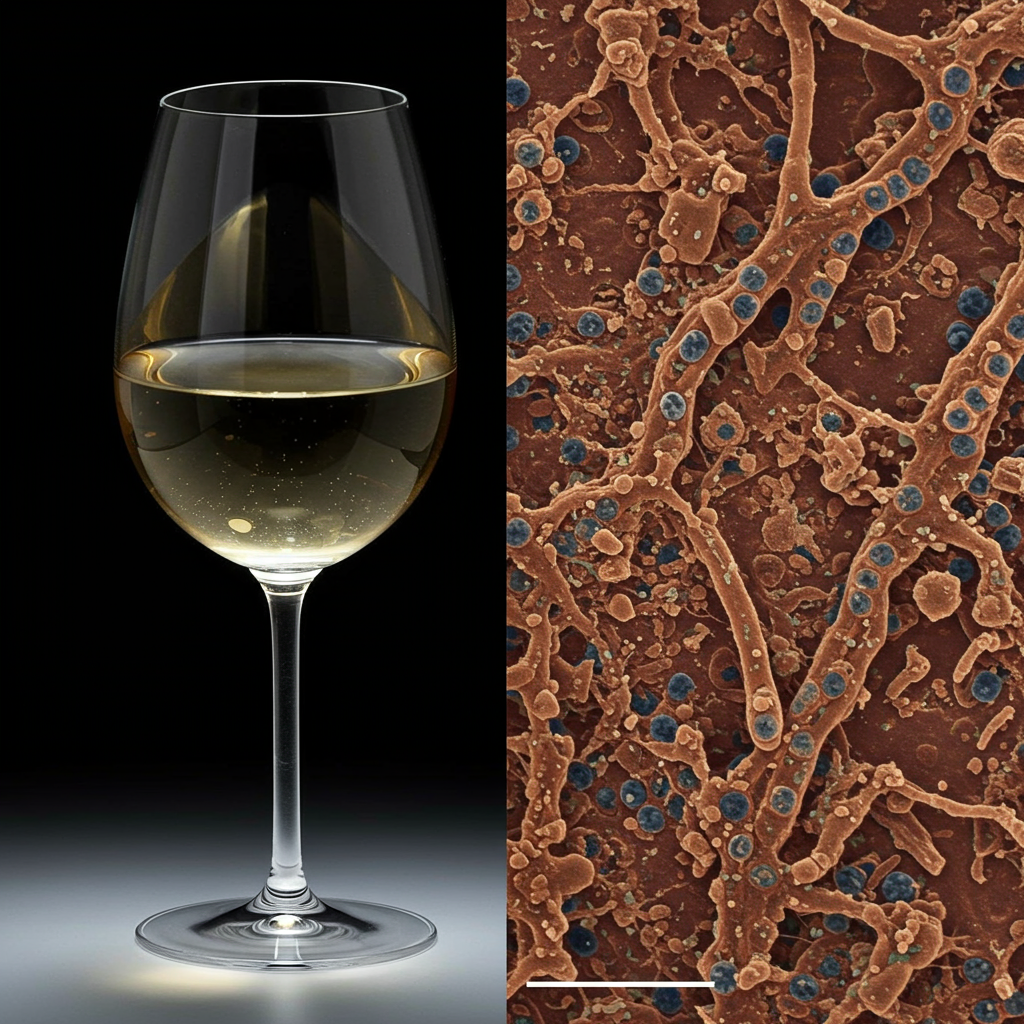Many people reach for a glass of wine, often believing it to be a relatively healthy alcoholic choice, perhaps due to antioxidants found in red varieties. However, recent research and broader health guidelines paint a more complex picture. While the overall health effects of alcohol are widely debated, a notable new study has uncovered a surprising potential risk specifically associated with white wine: an increased risk of skin cancer.
This finding comes from a comprehensive analysis led by researchers at Brown University. They delved into data from 42 studies involving nearly 96,000 participants to compare the cancer risks linked to red versus white wine consumption.
Key Findings on Wine and Cancer Risk:
The study found no evidence to support the idea that red wine actively reduces overall cancer risk, despite containing compounds like resveratrol.
Surprisingly, white wine consumption was linked to a 22% higher risk of skin cancer, a category that includes basal cell carcinoma, squamous cell carcinoma, and malignant melanoma.
Importantly, red wine consumption was not associated with this particular increased skin cancer risk in the study.
The analysis also indicated that women who drank white wine faced a 26% higher overall cancer risk compared to those who did not.
Researchers hypothesize that the way the body metabolizes ethanol (alcohol) may play a key role in this increased risk, potentially causing DNA damage.
Alcohol: A Known Carcinogen
This specific finding about white wine adds to the growing body of evidence classifying alcohol as a known carcinogen. Health organizations globally recognize alcohol’s link to various cancers, including those of the head and neck, esophagus, liver, breast, and colon. The World Health Organization (WHO) classifies alcohol as a Group 1 carcinogen, placing it in the same category as tobacco. In fact, alcohol consumption was responsible for an estimated 740,000 cancer cases worldwide in 2020 alone. Even relatively low levels of alcohol consumption have been associated with increased risks; for instance, some research suggests even one alcoholic drink per day can increase a woman’s risk of breast cancer by a small percentage.
The Complex Picture: Alcohol and Heart Health
Adding further complexity to the discussion, research on alcohol’s effects isn’t always straightforward and can sometimes present seemingly conflicting findings depending on the health outcome studied. For example, a separate large study utilizing data from the UK Biobank, which examined half a million middle-to-older aged individuals, looked at risk factors for sudden cardiac arrest. While confirming the importance of known factors like diet, weight, and blood pressure, this study uniquely found that a higher consumption of Champagne and/or white wine was associated with protection against sudden cardiac arrest. The mechanisms behind this potential protective association are not yet clear, and this finding highlights how alcohol can have different, and sometimes opposing, impacts on various health systems in the body. However, it’s crucial to reiterate that this finding pertains specifically to sudden cardiac arrest risk and does not negate the established risks of alcohol consumption for various types of cancer.
Expert Guidance on Alcohol Consumption
Given the known risks, what do health experts recommend? While the decision to drink remains personal, nutritionists and health authorities provide clear guidance. The World Health Organization states that from a health perspective, no amount of alcohol is considered safe. The body treats alcohol as a toxin, prioritizing its elimination.
For those who choose to drink, the Centers for Disease Control and Prevention (CDC) offers guidelines for “moderate” consumption: up to one drink per day for women and up to two drinks per day for men. It’s important to understand this means daily limits, not an average over the week; “banking” drinks for one large consumption occasion is considered more harmful. A standard “one drink” size is often smaller than people realize – for wine, it’s typically 5 ounces (12% ABV).
Beyond the quantity, experts emphasize the importance of how and why people drink. Drinking on an empty stomach, for instance, leads to faster absorption and quicker intoxication. Practicing strategies like drinking water between alcoholic beverages can help with hydration and slow the pace of consumption. Furthermore, reflecting on the reasons for drinking is key. Is it genuinely for enjoyment or socialization, or is it used as a way to cope with stress, isolation, or difficult emotions? Relying on alcohol for stress relief can mask underlying issues and potentially lead to unhealthy habits. Exploring alternative coping mechanisms and genuine self-care activities is vital.
It’s also worth noting that alcohol use, even moderate, doesn’t just impact the drinker’s physical health. Children are often more aware of parental drinking habits than parents realize and can be affected by changes in mood or behavior, even after a drink or two.
Making Informed Choices
While an occasional glass of wine might be part of a lifestyle for some, it’s essential to be fully informed about the potential health implications. This latest research linking white wine specifically to an increased risk of skin cancer adds another layer of consideration. Coupled with the established evidence of alcohol being a carcinogen impacting overall cancer risk and the perspective that no amount is truly “safe,” understanding these risks allows individuals to make conscious decisions about their consumption habits and prioritize their long-term health.




